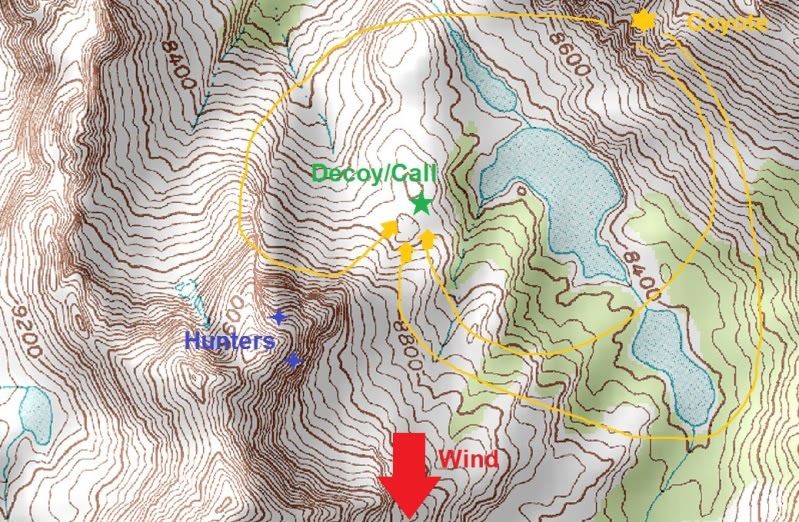There is a wealth of information out there concerning this topic, which I read prior to getting started myself. I hunt near Oracle Junction, north of Tucson. There is just too much to cover in a post, but I can give some pointers:
1. Knowing the lay of the land is invaluable. Hunting just underneath the crest of a hill gives you a good field of view and hides your profile.
2. I would suggest getting some good camouflage (headgear included), and be aware of your scent (I like to post near juniper if possible to cover my scent, along with facing into the wind).
3. Remote controlled calls are awesome and versatile. They allow you to call without giving away your location. I start with a coyote locator call and move on from there. Start mid-volume, as you can scare them away if it?s too loud. Distressed rabbit is a popular call, and as a result, coyotes don't always react as well to it late-season. Also, a coyote may run several miles to reach you, so be patient for them to make an appearance.
4. With regard to calling, mix it up, if you're in dear country throw in a fawn distress call. If it is mating season, pull out some female calls.
5. Consider your moon cycle before hunting. If last night there was a full moon, most likely they aren't as hungry, and may respond better to territorial challenges or mating calls.
6. I use a decoy, which is just a furry tail spinning about. The decoy slows down their approach long enough to take an aimed shot. I set up the decoy next to the call, and the call in an open area near the maximum range of my remote. Coyotes often spot your decoy, and then approach from downwind. That is why I set the decoy out so far, so I can have opportunities to shoot them as they approach my decoy from its rear.
 7.
7. Expect coyotes to appear out of nowhere, including your rear. Scan with your eyes, not your head. Your body movement can give away your location. Bringing a seat cushion can help you to stay comfortable.
8. Optics help, but make sure it has about a 3-power minimum and leave it there until you need more power for a long shot. If you're in hilly country, you don't necessarily need a scope.
9. If possible, hunt with a friend or two, but no more. Your weapon should complement your hunting buddy?s weapon, and somebody should have a weapon for close range work.
10. Lastly, I don?t go longer than about a 30-minute stand. After that, I move on.
